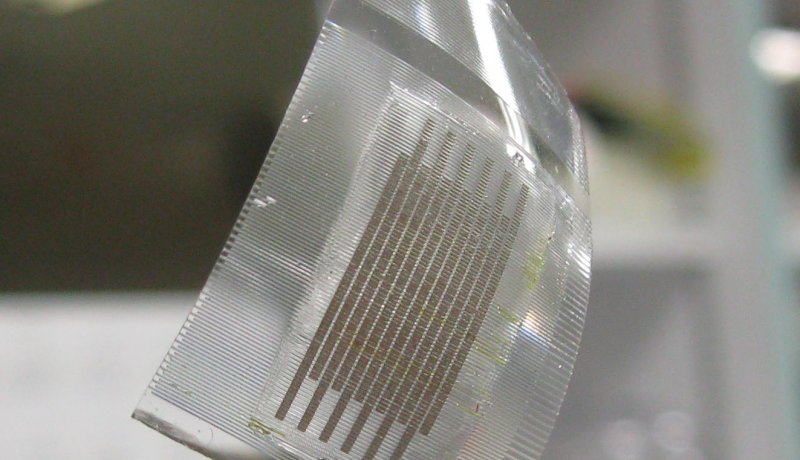Stretchable capacitor is great for wearables
May 01, 2017
on
on

Despite all the advances in modern electronics, the humble capacitor (C) not only holds its own but also makes headlines occasionally in the electronics press.
A new type of flexible micro-supercapacitors developed by a research team from Nanyang Technological University in Singapore may well sprout developments in the realm of wearable technology, with a variety of applications such as smart T-shirts charging mobile phones.
The supercapacitor with micro size is said to utilize out-of-plane wavy structures made of graphene micro-ribbons, and is structured so that the strain concentration on the electrode fingers is reduced. This prevents the cracking and detaching of electrode materials while keeping the electrode fingers at a relatively constant distance.
This structure solves a physical challenge encountered with traditional batteries, which are thick and rigid and not suitable for small, malleable wearables.
Graphene is popular for its conductivity, strength and thinness, but cannot be stretched. To solve this challenge, the research team looked at the wave-like microstructure of skin and sought to apply that to form graphene micro-ribbons.
The micro-ribbons were placed into the pyramidal ridges of a stretchable polymer chip, forming a wave-like structure. Kirigami structures were developed to make the supercapacitor 500% more flexible without impacting electrochemical performance.
It’s too early to think ampère-hours -- in its present form, the graphene supercapacitor can only power LCD devices for one minute.
A new type of flexible micro-supercapacitors developed by a research team from Nanyang Technological University in Singapore may well sprout developments in the realm of wearable technology, with a variety of applications such as smart T-shirts charging mobile phones.
The supercapacitor with micro size is said to utilize out-of-plane wavy structures made of graphene micro-ribbons, and is structured so that the strain concentration on the electrode fingers is reduced. This prevents the cracking and detaching of electrode materials while keeping the electrode fingers at a relatively constant distance.
This structure solves a physical challenge encountered with traditional batteries, which are thick and rigid and not suitable for small, malleable wearables.
Graphene is popular for its conductivity, strength and thinness, but cannot be stretched. To solve this challenge, the research team looked at the wave-like microstructure of skin and sought to apply that to form graphene micro-ribbons.
The micro-ribbons were placed into the pyramidal ridges of a stretchable polymer chip, forming a wave-like structure. Kirigami structures were developed to make the supercapacitor 500% more flexible without impacting electrochemical performance.
It’s too early to think ampère-hours -- in its present form, the graphene supercapacitor can only power LCD devices for one minute.
Read full article
Hide full article


Discussion (0 comments)